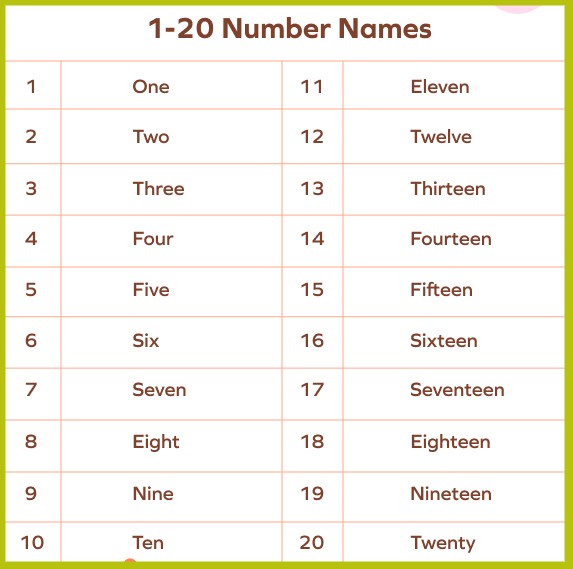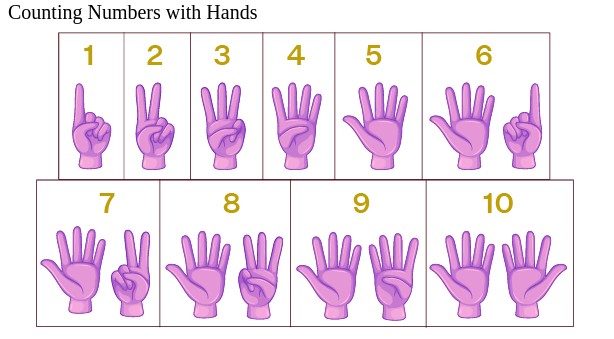Counting numbers form the foundation of mathematics, enabling us to quantify and understand the world around us. In this article, we will delve into the definition of counting numbers, explore their significance in everyday life and mathematics, and provide examples to enhance our understanding.
What are Counting Numbers?
Counting numbers, also known as natural numbers, are the set of positive integers starting from 1 and extending infinitely. They are used for counting and represent the concept of cardinality or how many objects are in a set. The set of counting numbers can be represented as {1, 2, 3, 4, 5, …}.
Counting Chart: Counting Numbers from 1 to 20
The counting chart represents the sequence of counting numbers starting from 1 and continuing indefinitely. Each number in the chart represents the next countable quantity, and the pattern follows a consistent increase of one unit.
Here are the counting numbers from 1 to 20 presented
| Number | Number Word | Number | Number Word |
|---|---|---|---|
| 1 | One | 11 | Eleven |
| 2 | Two | 12 | Twelve |
| 3 | Three | 13 | Thirteen |
| 4 | Four | 14 | Fourteen |
| 5 | Five | 15 | Fifteen |
| 6 | Six | 16 | Sixteen |
| 7 | Seven | 17 | Seventeen |
| 8 | Eight | 18 | Eighteen |
| 9 | Nine | 19 | Nineteen |
| 10 | Ten | 20 | Twenty |
Counting in Numbers with Hands
Counting with hands is a visual and tactile way to represent numbers. Each hand has five fingers, allowing us to count up to five on each hand. By utilizing both hands, we can count up to ten.
Here’s a guide on how to count from 1 to 10 using your hands and fingers:
- Start with both hands open, palms facing up.
- For each finger that is extended, count one number. Begin with the thumb on the right hand and proceed to the little finger on the same hand, counting from 1 to 5.
- Once you have counted five on the right hand, move to the left hand. Extend one finger at a time, starting with the thumb and ending with the little finger, counting from 6 to 10.
Counting with hands can be a useful method for young children or in situations where you need a visual representation of numbers. It helps build a basic understanding of numbers and introduces the concept of place value.
Count 100 to 1000
Here’s an example of counting from 100 to 1000 in a two-column format, incrementing by 100:
| Number | Number Word |
|---|---|
| 100 | One hundred |
| 200 | Two hundred |
| 300 | Three hundred |
| 400 | Four hundred |
| 500 | Five hundred |
| 600 | Six hundred |
| 700 | Seven hundred |
| 800 | Eight hundred |
| 900 | Nine hundred |
| 1000 | One thousand |
In this table, the numbers from 100 to 1000 are listed in the first column, while the corresponding number words are listed in the second column. Each number increments by 100.
Counting Numbers Worksheets
1. Count the apples and write the number:
Answer: _______
2. Count the birds and write the number:
Answer: _______
3. Count the flowers and write the number:
Answer: _______
Examples of Counting Numbers
Let’s explore some examples of counting numbers:
- 1: One represents a single unit or the smallest countable quantity.
- 7: Seven represents a countable quantity larger than one, often used to represent a group or collection of objects.
- 15: Fifteen is a higher counting number, indicating a larger quantity.
- 100: One hundred represents a significant countable value or a benchmark for comparison.
- 2,500: Two thousand five hundred represents a much larger countable quantity, often used in contexts where a substantial number is involved.





